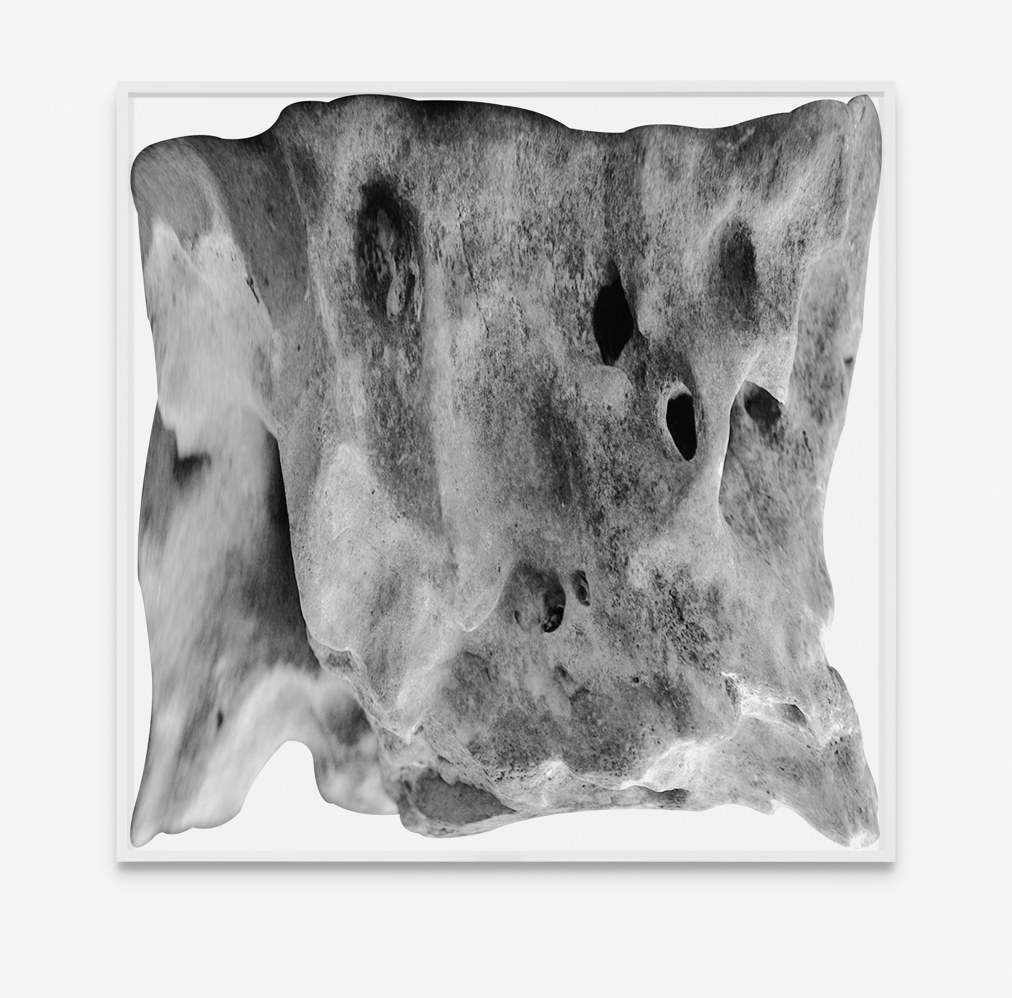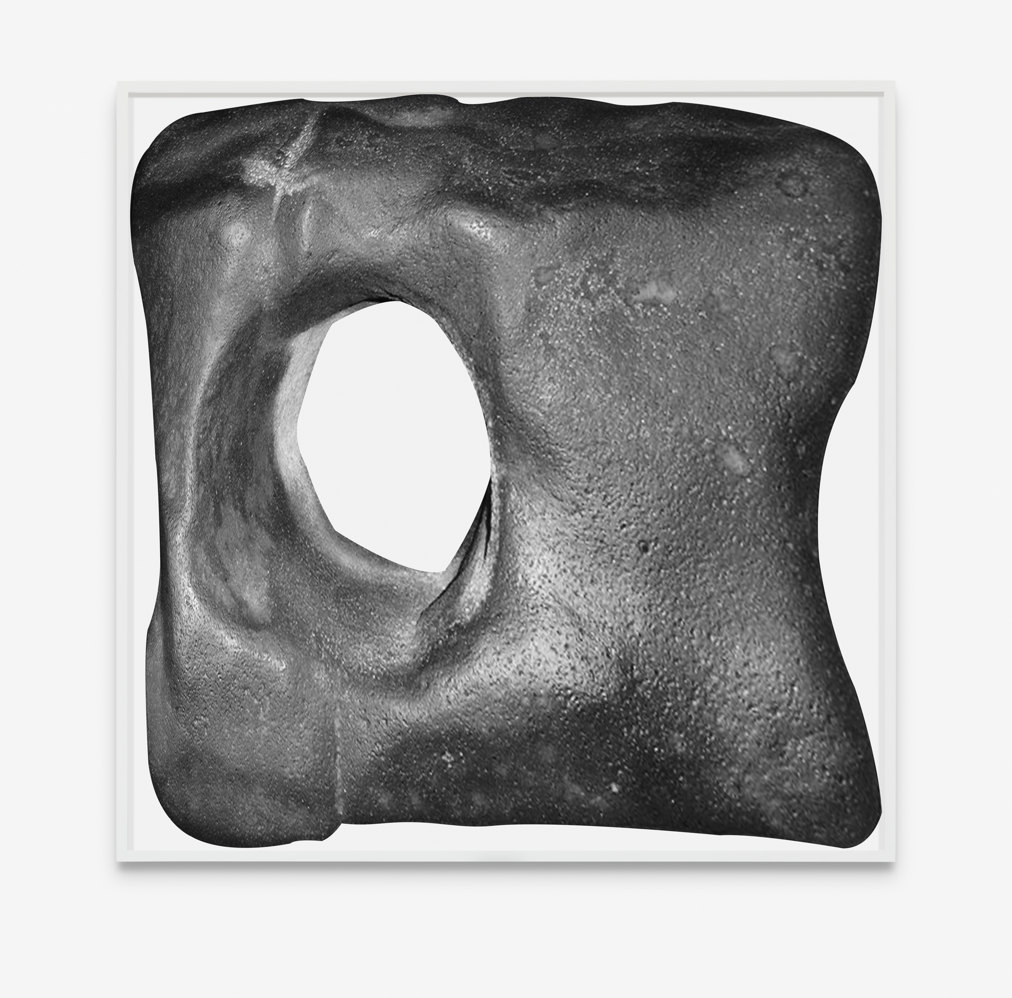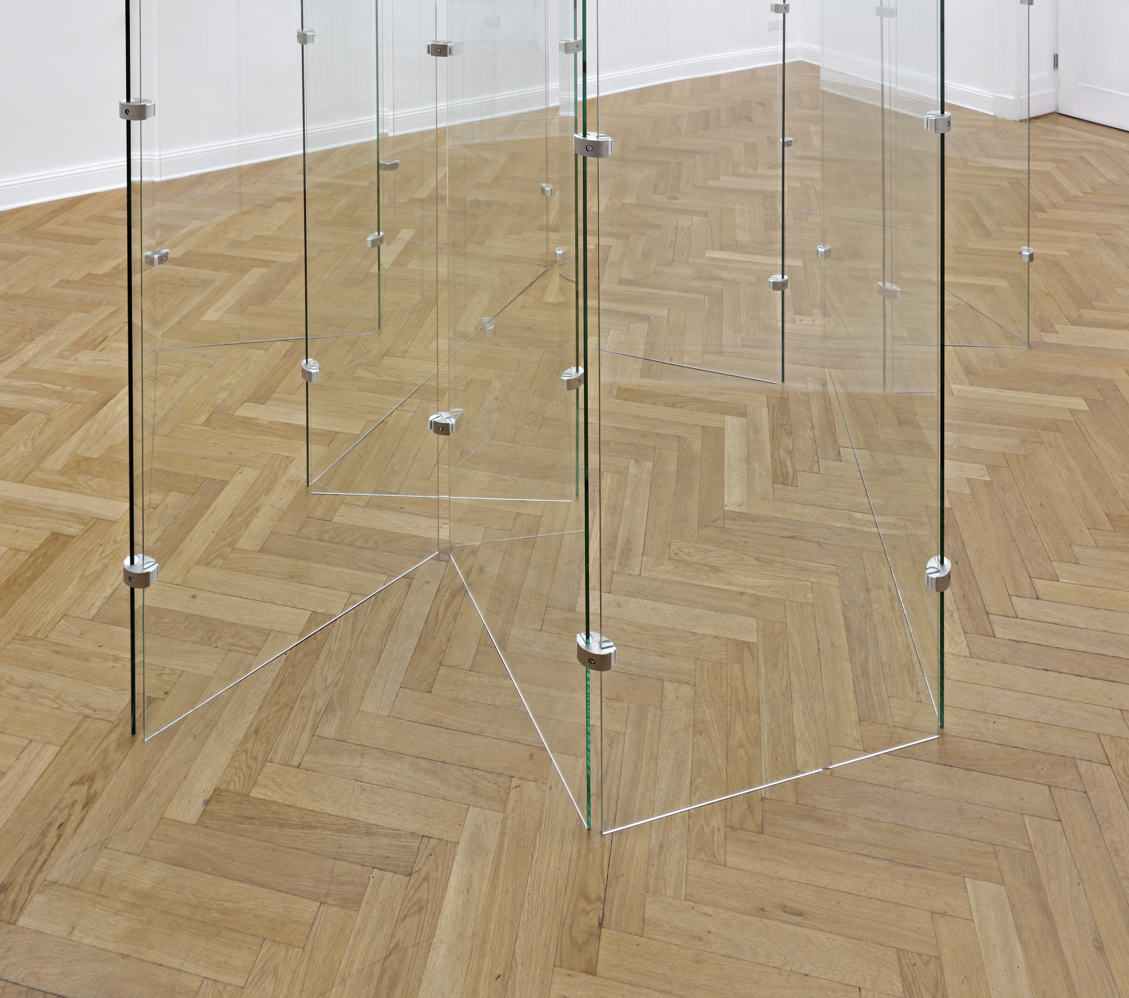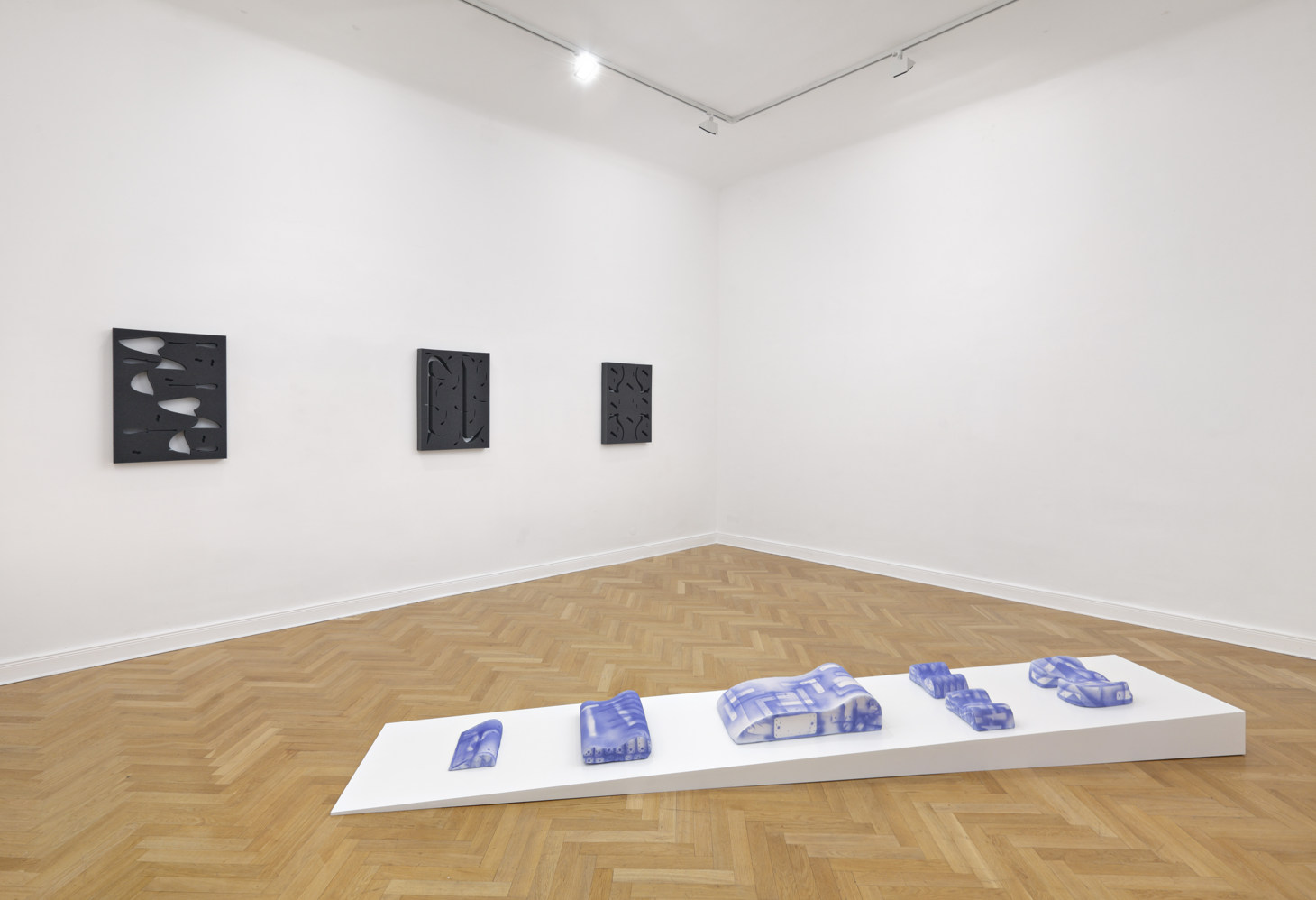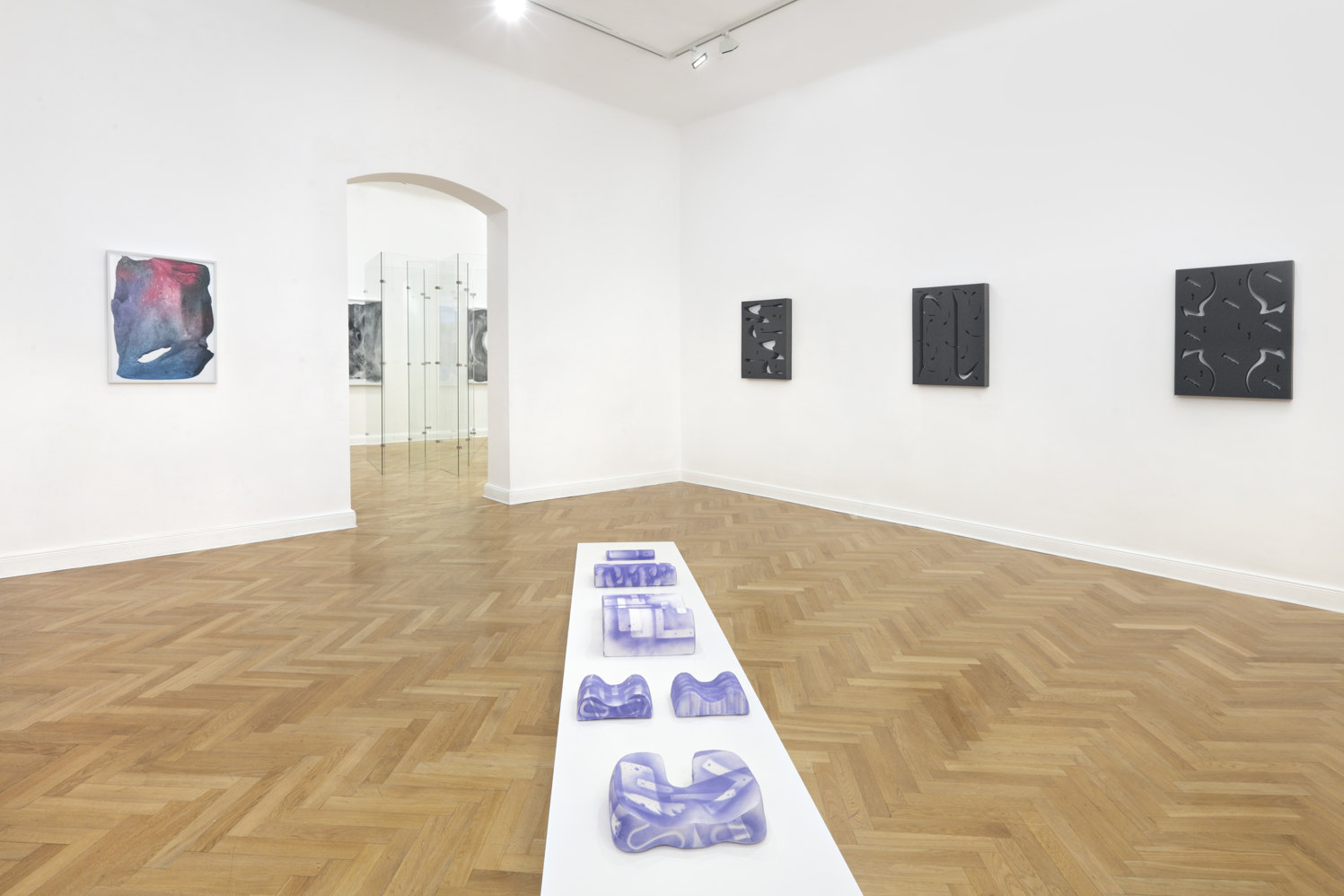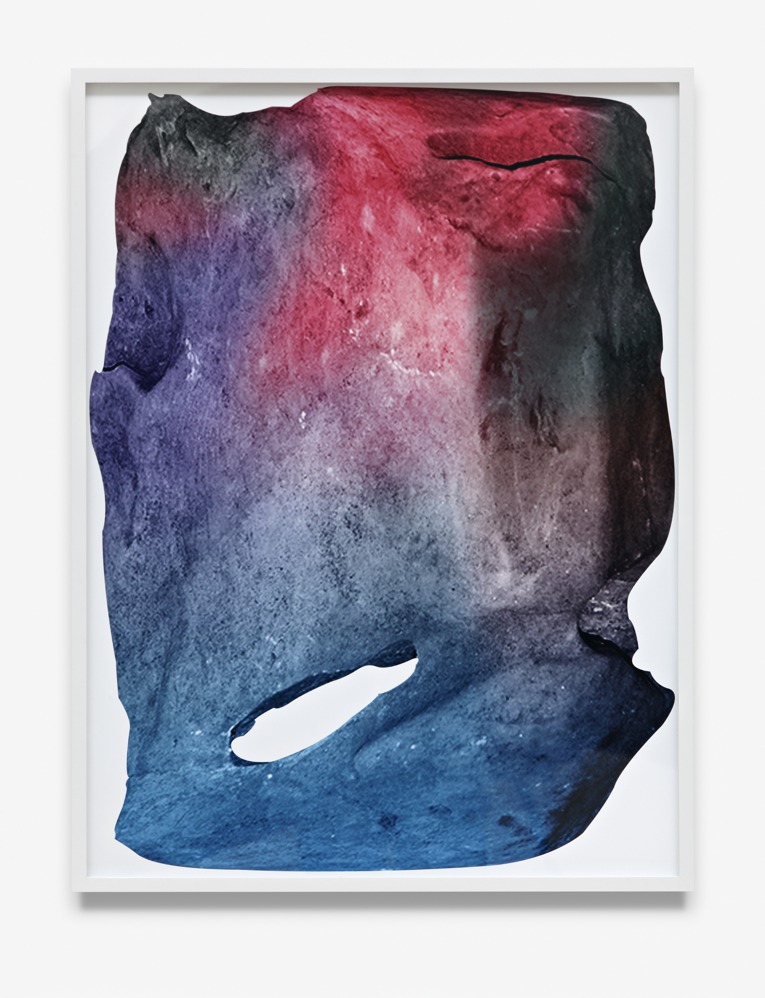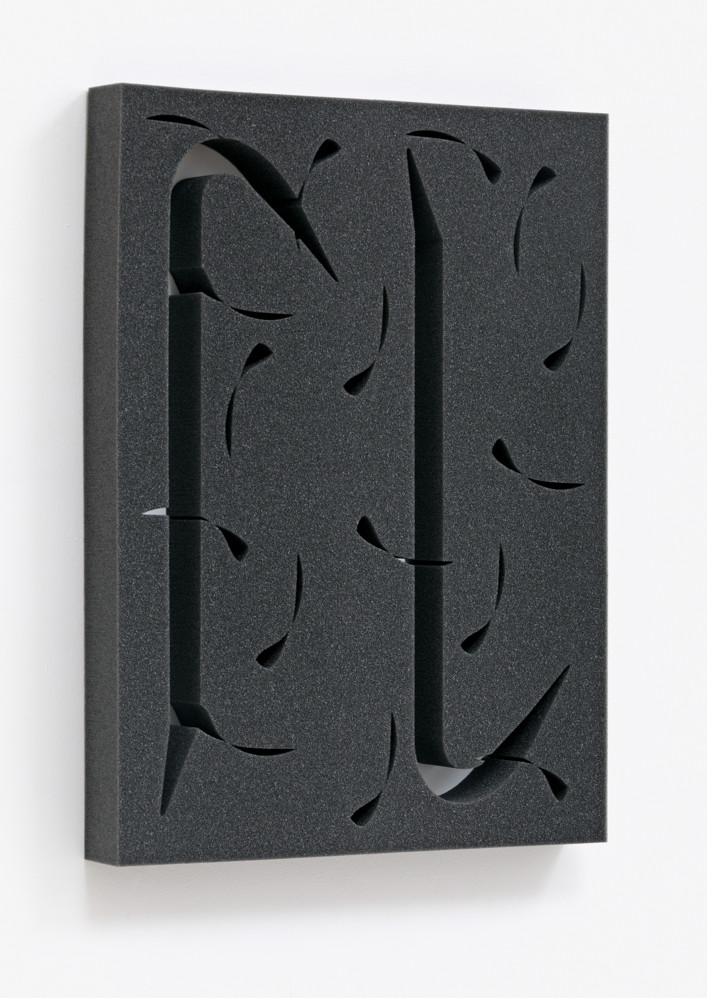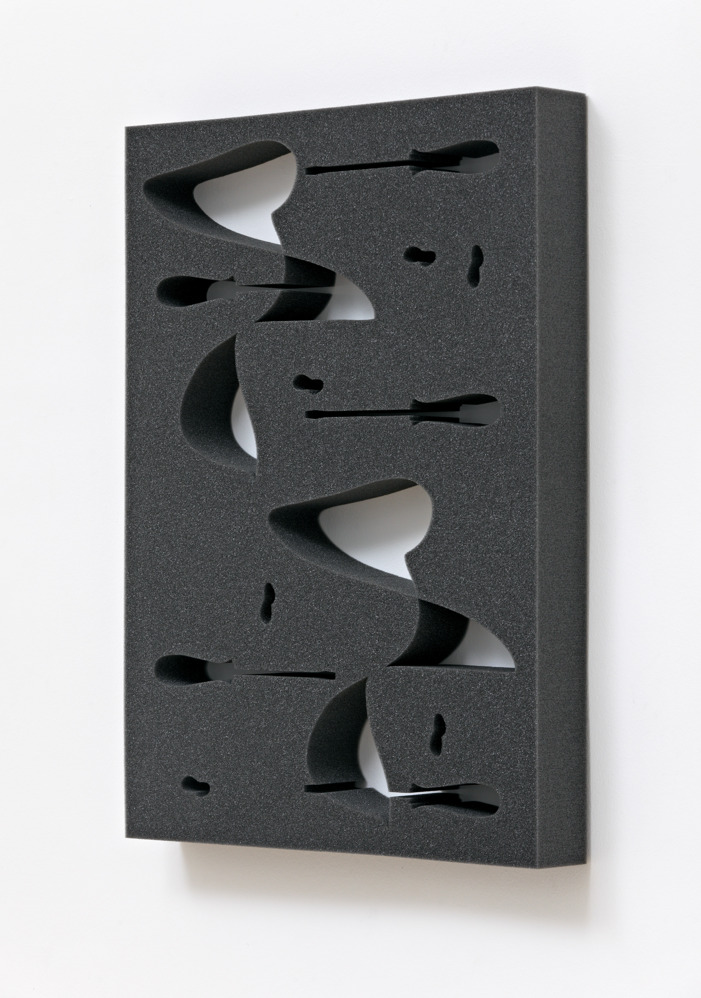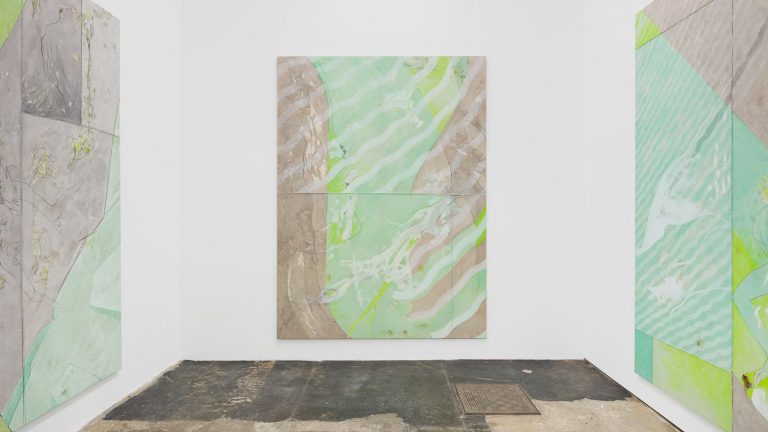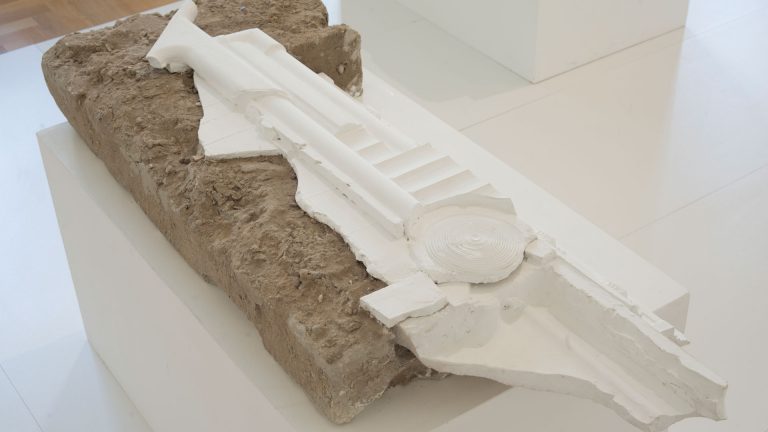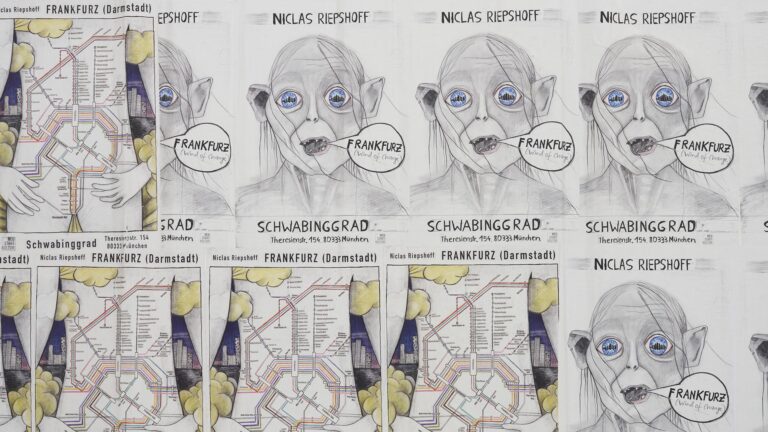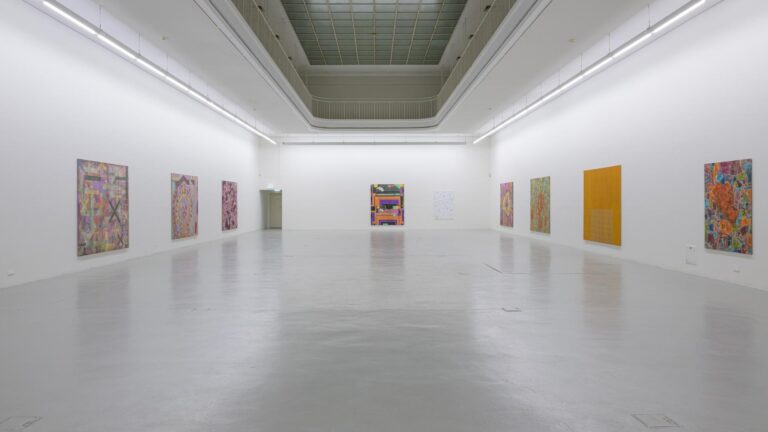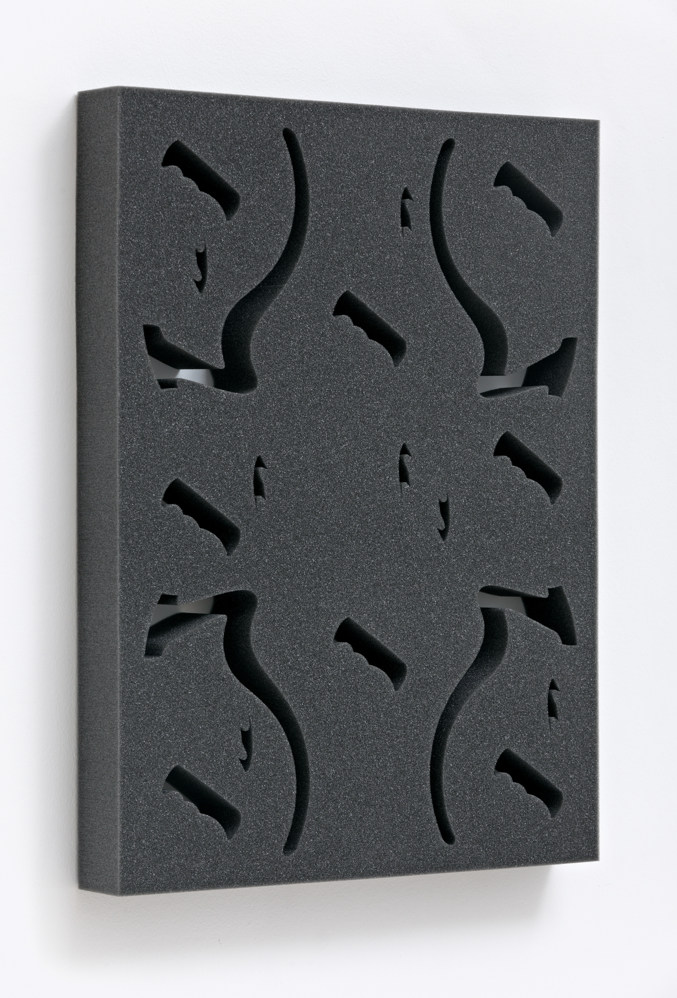
Artist: Nicolas Pelzer
Exhibition title: Custom Utility
Venue: Future Gallery, Berlin, Germany
Date: June 27 – July 26, 2014
Photography: Courtesy of the artist and Future Gallery
Future Gallery is proud to present Custom Utility, the second solo show by German artist Nicolas Pelzer at the gallery.
Entering the exhibition space, the viewer is confronted with a large-scale glass panel installation, Breath Control (2014) which fans out and covers large parts of the exhibition space. The transparent material becomes visible through reflections and the overlay of several glass sheets, with its semi-presence blurring the view on the works behind, Stones (2014), merging them together into one constellation. Pelzer uses Google image search as a basis for these works, focusing on the formal quality of the stone. The context of its origin is lost, resulting in anonymous photographic objects. The stones are isolated and enlarged, being distorted in a digital sculpting process to fit into the “container” chosen by the artist, a square frame. The conflict between the work in the space is implied and shifts our focus to the precondition of an object’s physical presence.
Another series of works, shown in the second space, are water-jet cut foam works, wall objects that associate inlays of tool boxes, custom-made to protect the instruments. Between recognizable shapes, like a crowbar or a screw driver, the viewer discovers some that are difficult to classify, making the whole composition an abstract placeholder for unknown variables. This reference to work and physical labor can be seen as a counter piece to the origin of the second installation presented in the space, Orthopedic Reconstructions (2014). On a long gently inclined wedge-shaped pedestal, several orthopedic pillows are presented as segments of the human body. They stand for physical limitation, inferring the change of lifestyle and working conditions in contemporary society. The tool is eclipsed, it then re-appears as camouflage patterns on the fabrics the pillows are covered with. The pillows evoke a seemingly digital appearance and sci-fi aesthetic, where the human body itself becomes replaced.


